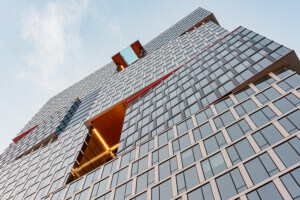The Van Alen Institute, along with the New York City Council, have announced the six finalists—three professional proposals and three proposals in the “young adult” category for designers 21 and younger—of Reimagining Brooklyn Bridge, an international design competition that challenged entrants to breath new, cyclist- and pedestrian-focused life into the walkway of the iconic, borough-spanning landmark. Among the finalists are some big names—literally.
As outlined in a press statement, the coronavirus pandemic has only further made clear the need for streets and people-centered thoroughfares (see Paris) that “foster equitable, accessible, and sustainable transportation options, create a healthy and safe environment for all New Yorkers, and opportunities for small businesses and vendors to flourish.” The competition uses the untapped potential of the Brooklyn Bridge as a “testing ground” to explore viable designs that respond to these considerations in both the short- and long-term.
Key factors in each proposal considered by the competition jury included accessibility and safety; environmental benefit and security; acknowledgment of the bridge’s landmark status; feasibility; team composition, and magic, described as “new ideas that surprise, delight, and fascinate.”
“With six lanes for traffic and one narrow, cramped right-of-way that pedestrians and cyclists must share, it’s clear that we haven’t been making the best use of the Brooklyn Bridge,” said Danny Harris, executive director of the nonprofit Transportation Alternatives and one of the members of the competition’s nine-person jury panel, which also includes Marla Gayle, managing director of SOM, New York Landmarks Conversancy president Peg Breen, and writer and editor Amy Plitt. “This design competition will expand the conversation about how to unlock this critical link, and as advocates fighting for a bike- and pedestrian-focused future, we’re glad to be a part of it.”
The next stage of the competition, which was first announced by City Council Speaker Corey Johnson in February, is a Design Showdown to be held on the evening of July 23, in which the six finalists will virtually present their proposals to the competition jury and the general public. A weeklong online public voting period concluding on July 30 will follow. The competition winners, one from each category, will be announced later in the summer.
Here’s a look at the finalist proposals, with a brief official summary of each design:
Professional category:
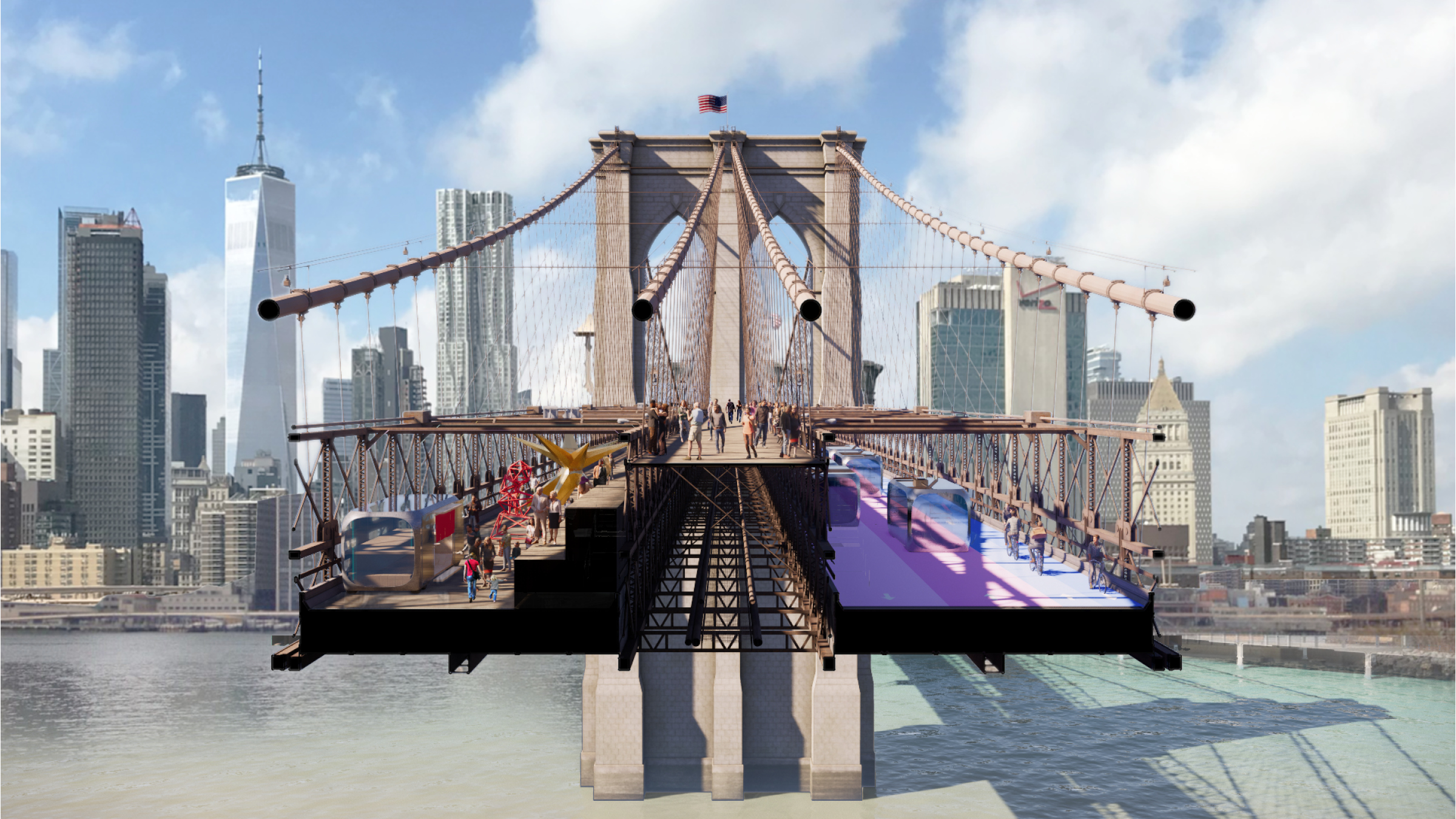
Back to the Future — BIG and ARUP (New York)
“Back to the Future seeks to return the bridge to its original state, both architecturally and functionally, and pilots innovations in autonomous mobility and public space design. By removing cars and related ramps, and providing more space for pedestrians, bikes and transit, this proposal moves more people and creates a stronger connection between Downtown Brooklyn, Lower Manhattan, and beyond.”
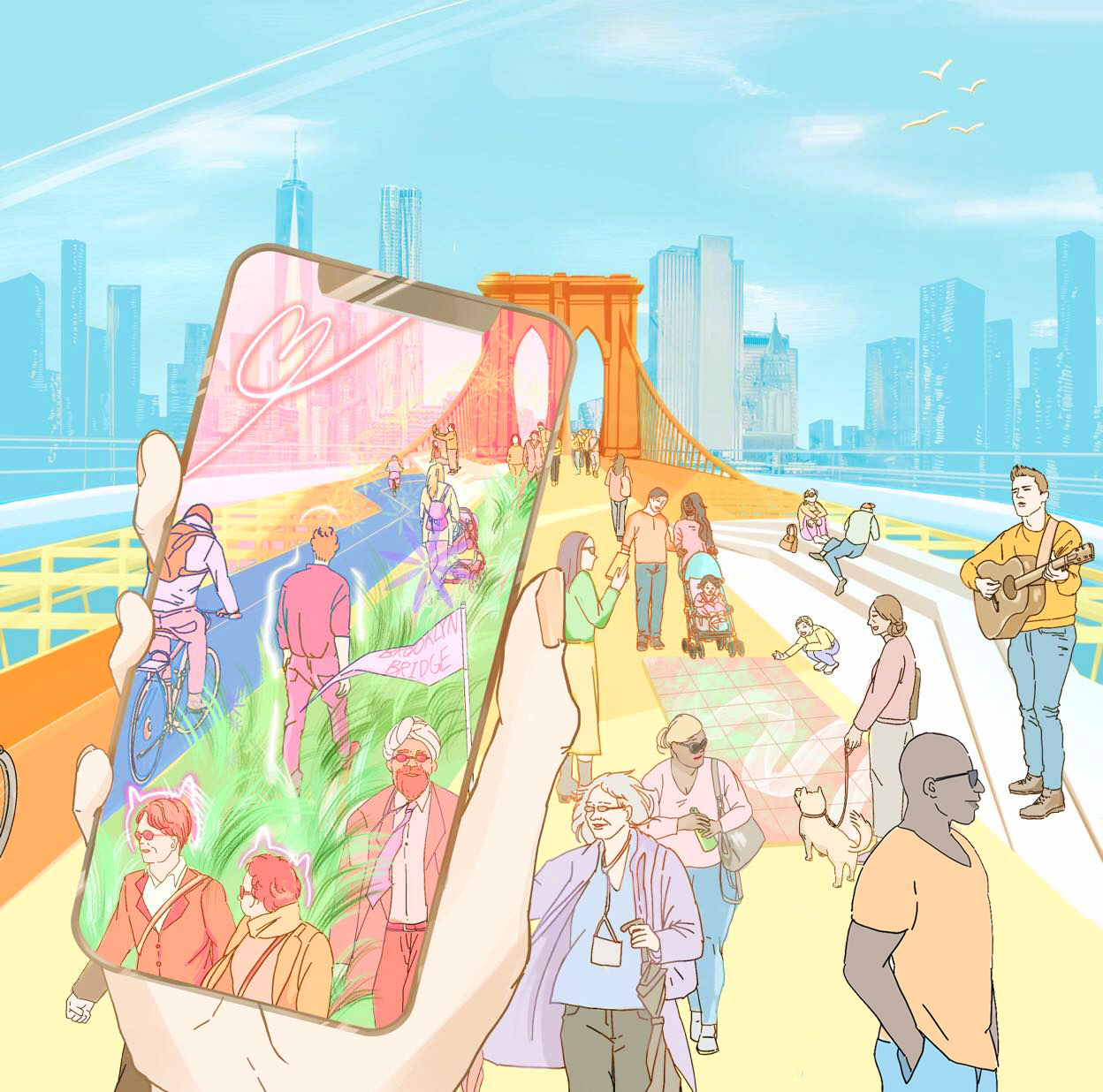
Bridge X — ScenesLab, Minzi Long, and Andrew Nash (New York, Boston, and Vienna)
“Bridge X proposes a Brooklyn Bridge that evolves in response to public feedback and adapts from a pandemic to a post-pandemic era. Through a phased approach, Bridge X reimagines the upper and lower decks to reclaim space for greater pedestrian and cyclist access, to make room for vendors and small businesses, and to offer new modes of engagement with the bridge. Digital tools and design interventions enable visitors to more easily access, explore, and reflect on their experiences of the bridge.”
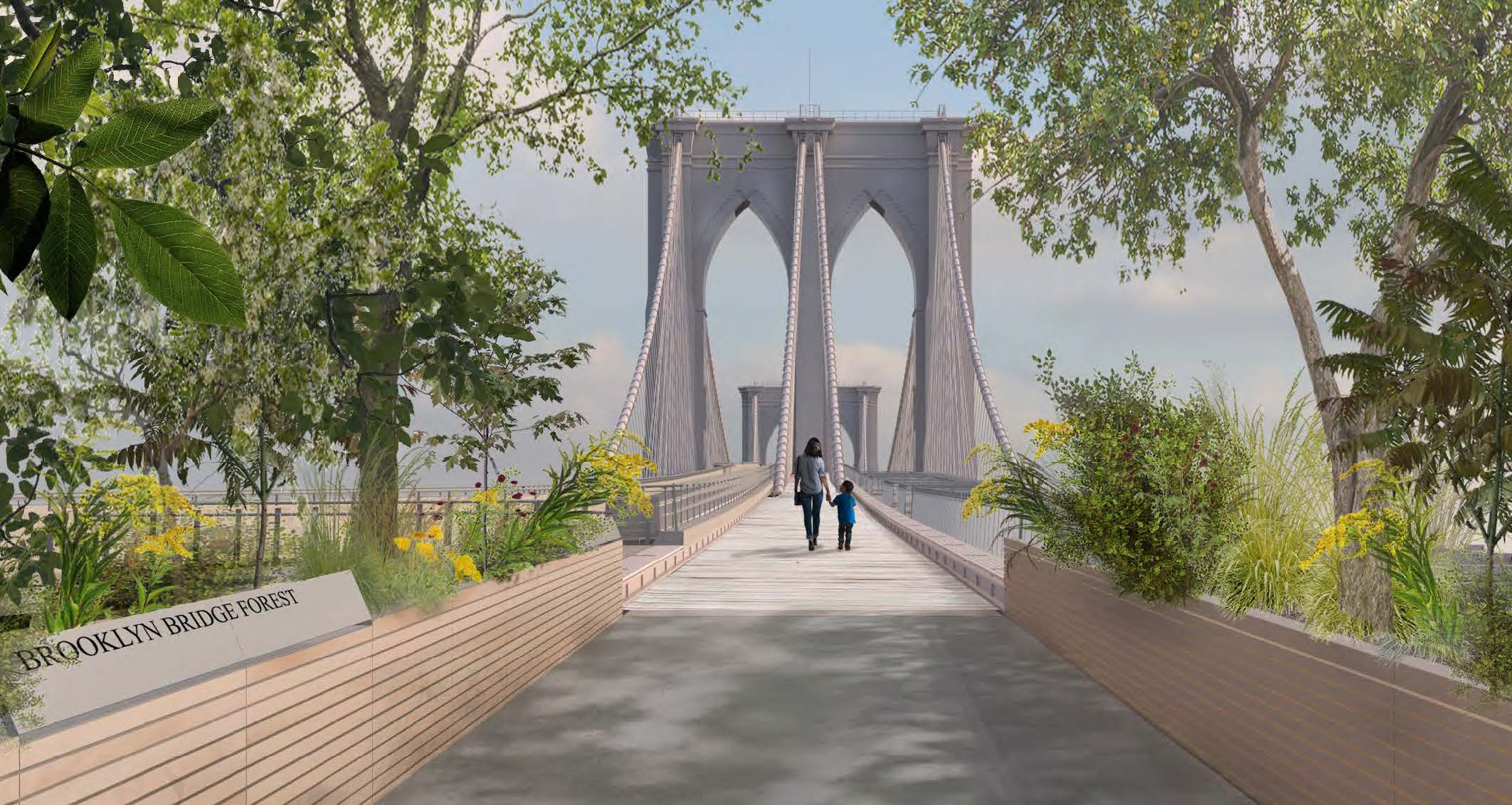
Brooklyn Bridge Forest —Team lead: Scott Francisco, Pilot Projects Design Collective (New York and Montreal)
“Brooklyn Bridge Forest improves mobility while respecting the landmark structure. The historic wooden walkway is expanded using planks sustainably sourced from a partner community in Guatemala that protects a 200,000-acre rainforest. A dedicated bike path and reclaimed traffic lane create new space for cyclists and low-carbon transit, while biodiverse “microforests” at either end of the bridge serve as green spaces.”
Young adult category:
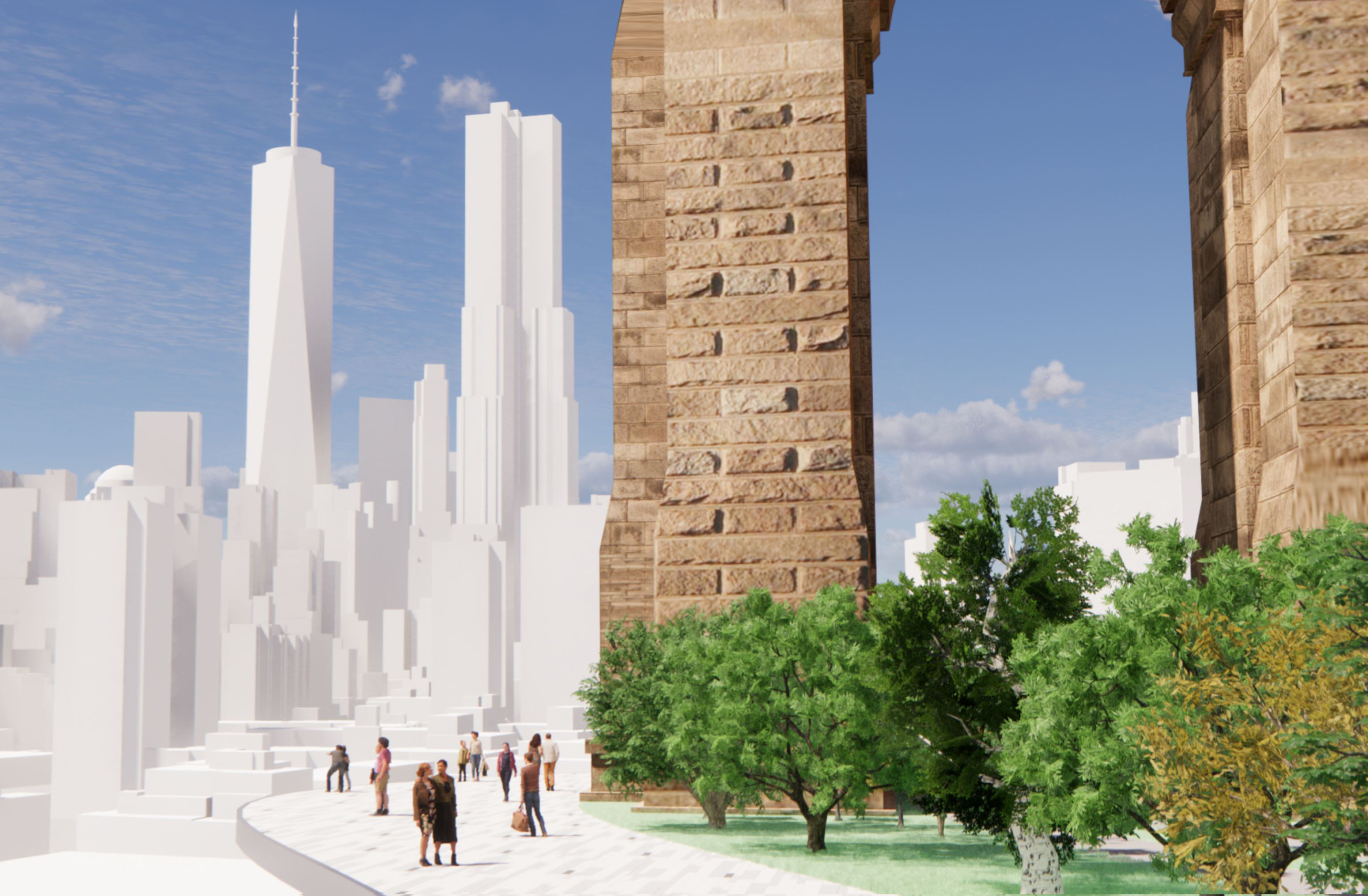
The Artery —Lukas Kugler (New Milford, Connecticut)
“With sensitivity to different user groups, The Artery creates a contiguous modern transportation corridor between boroughs. On the bridge, the design incorporates designated spaces for vendors and three separate pathways for cyclists, runners, and pedestrians. The substantial incorporation of greenery provides natural borders between these paths, creating an improved experience while encouraging native plants and wildlife to inhabit the bridge.”
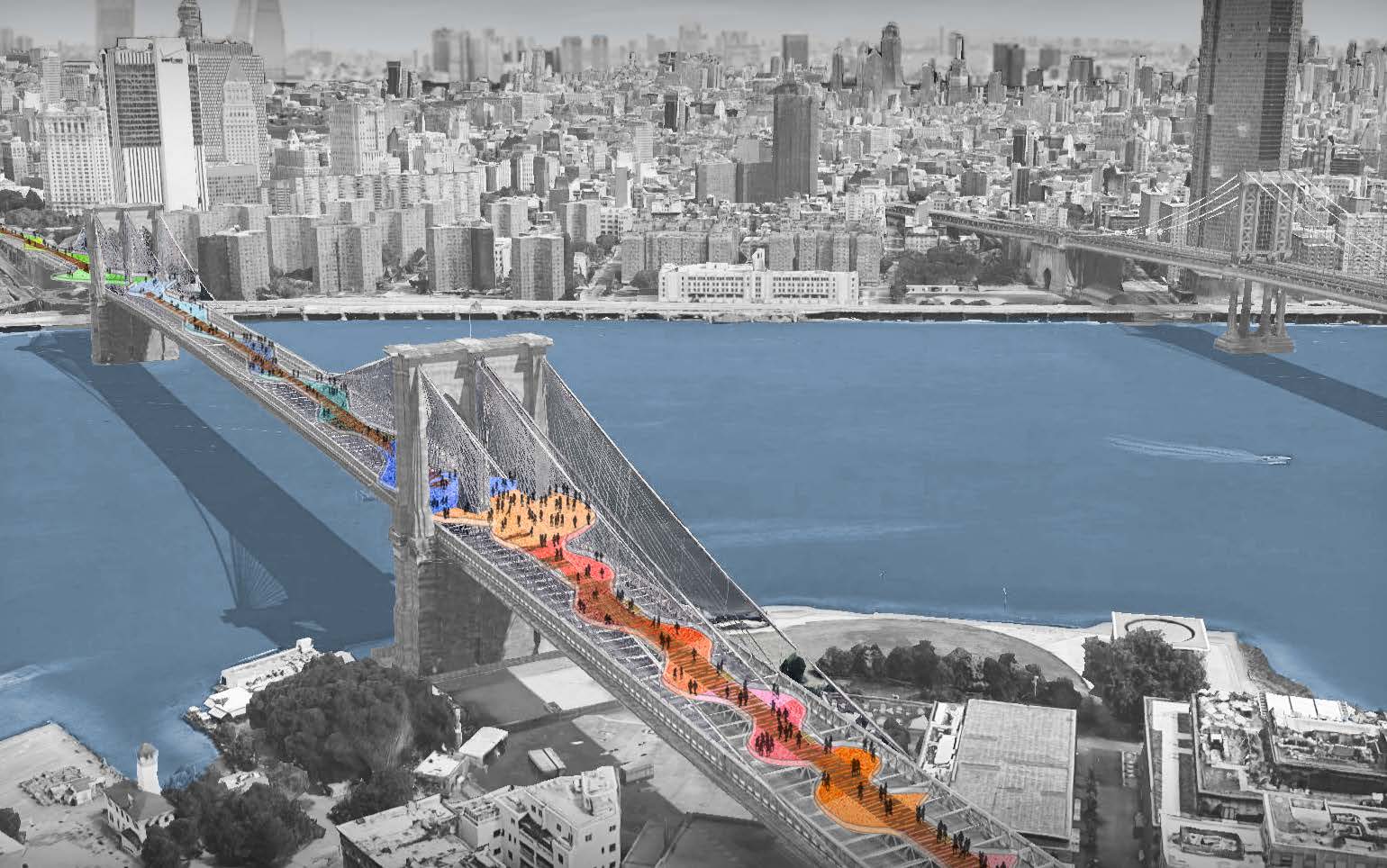
The Cultural Current — Aubrey Bader and Maggie Redding (Knoxville, Tennessee)
“Using a brightly colored path and cultural markers, The Cultural Current proposes a fluid integration of surrounding neighborhoods into a transportation and public space network that crosses the bridge. The proposal uses color in a playful way that’s also helpful for wayfinding, reuses existing wood boards and recycled plastic, and plans to phase car traffic off the lower roadway.”
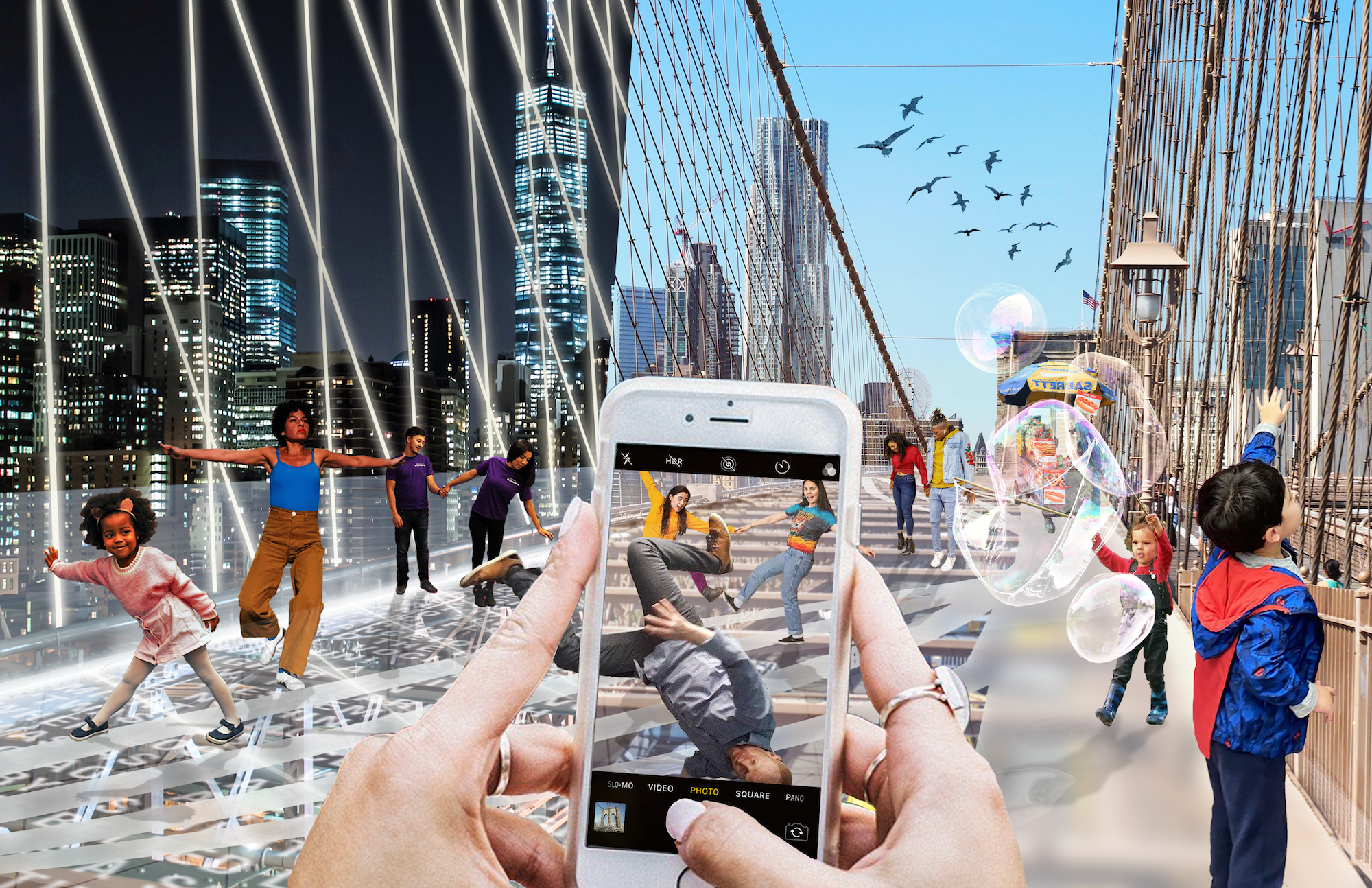
Do Look Down — Shannon Hui, Kwans Kim, and Yujin Kim (Hong Kong, Bay Area, California, and New York)
“Do Look Down’s installation of a glass surface above the bridge’s girders creates a whimsical new pedestrian space activated through art installations and seasonal programming. The lower roadway is converted into additional walkable and human-powered transport space that also offers opportunities for local vendors and performers. Powered by kinetic paving, an LED and projection system is mobilized to honor the city’s cultures, histories, and identities.”










